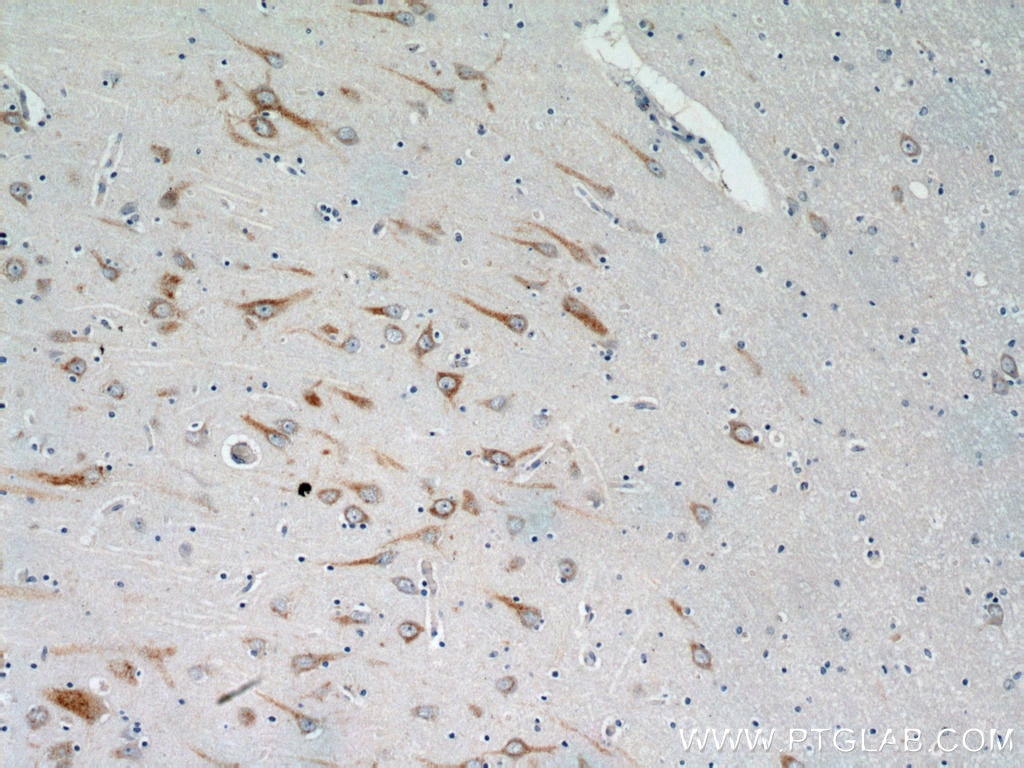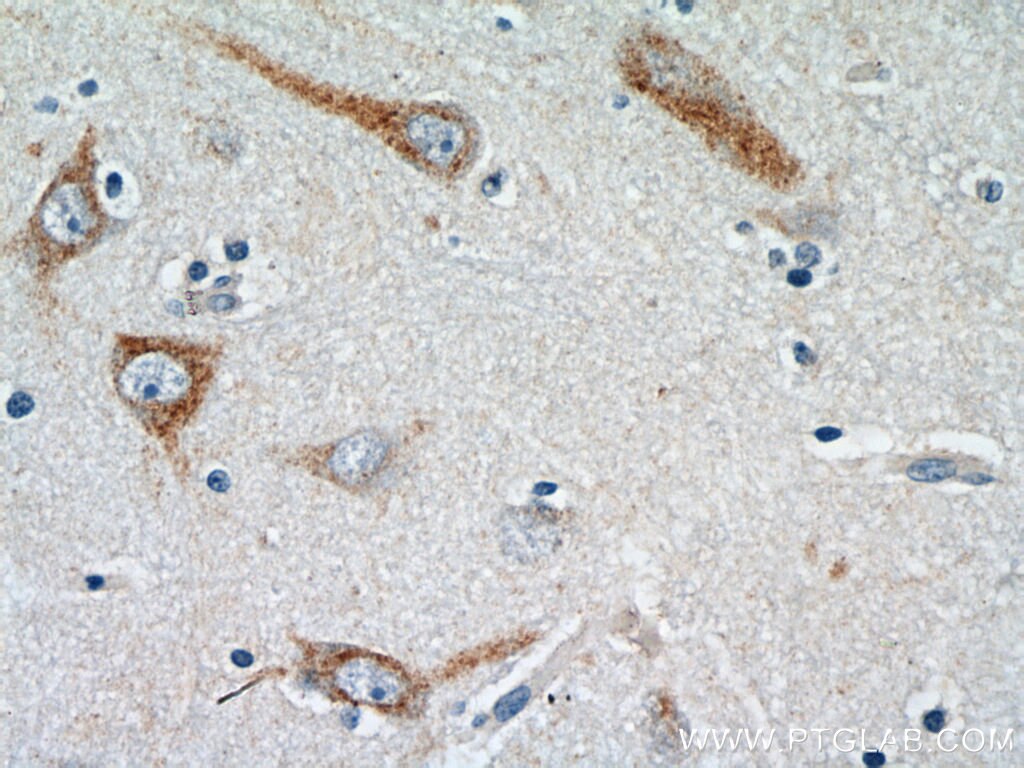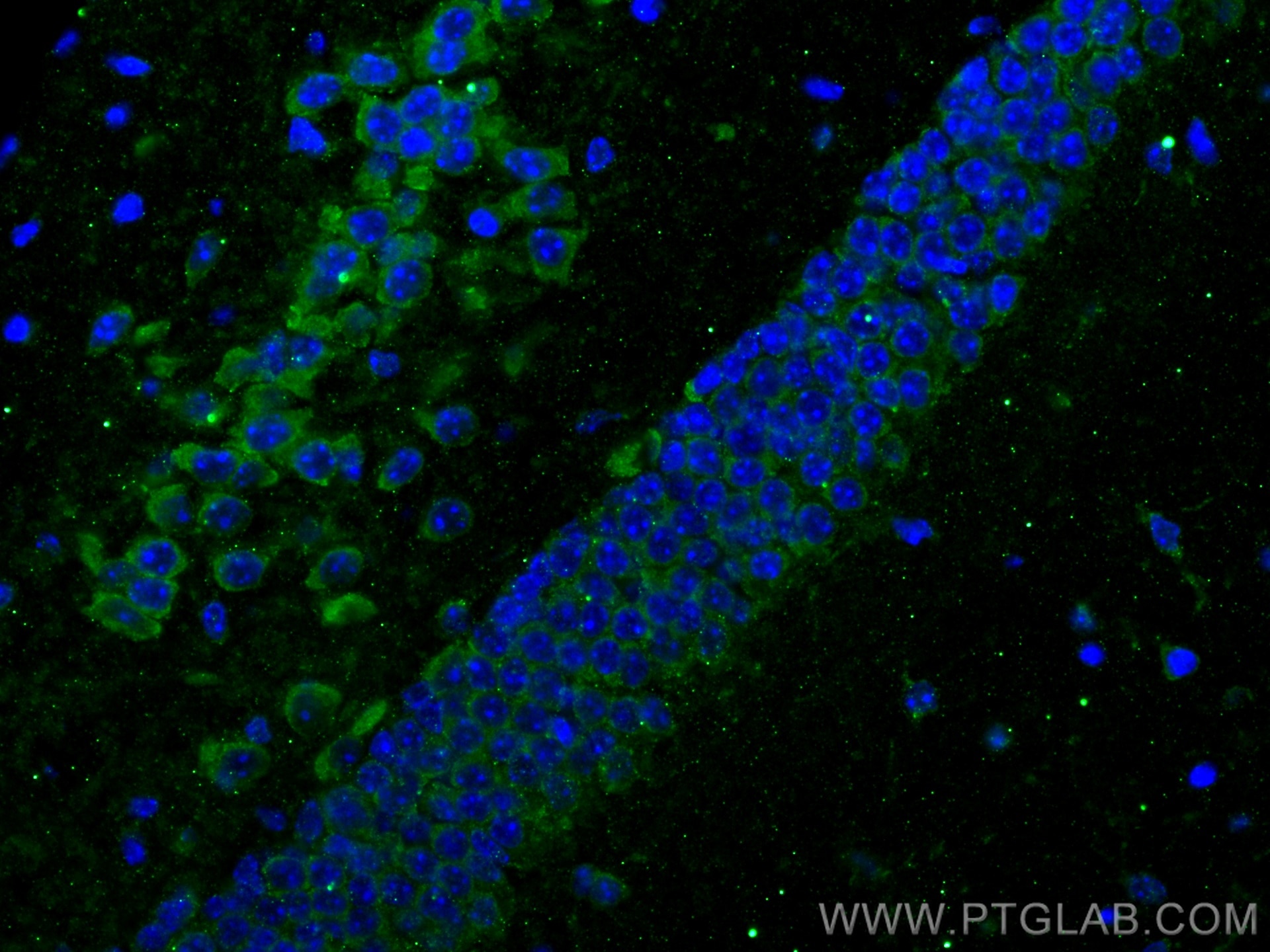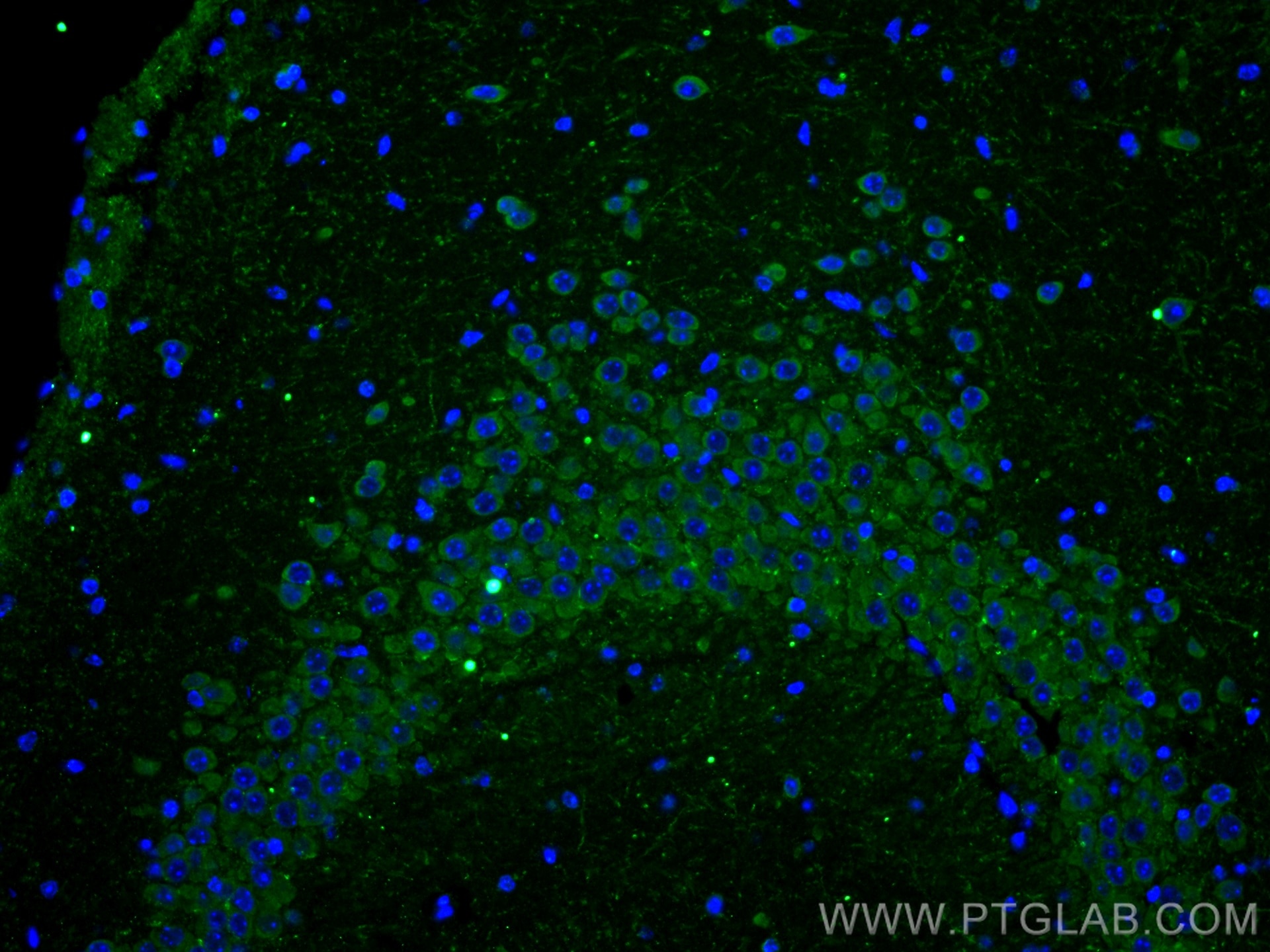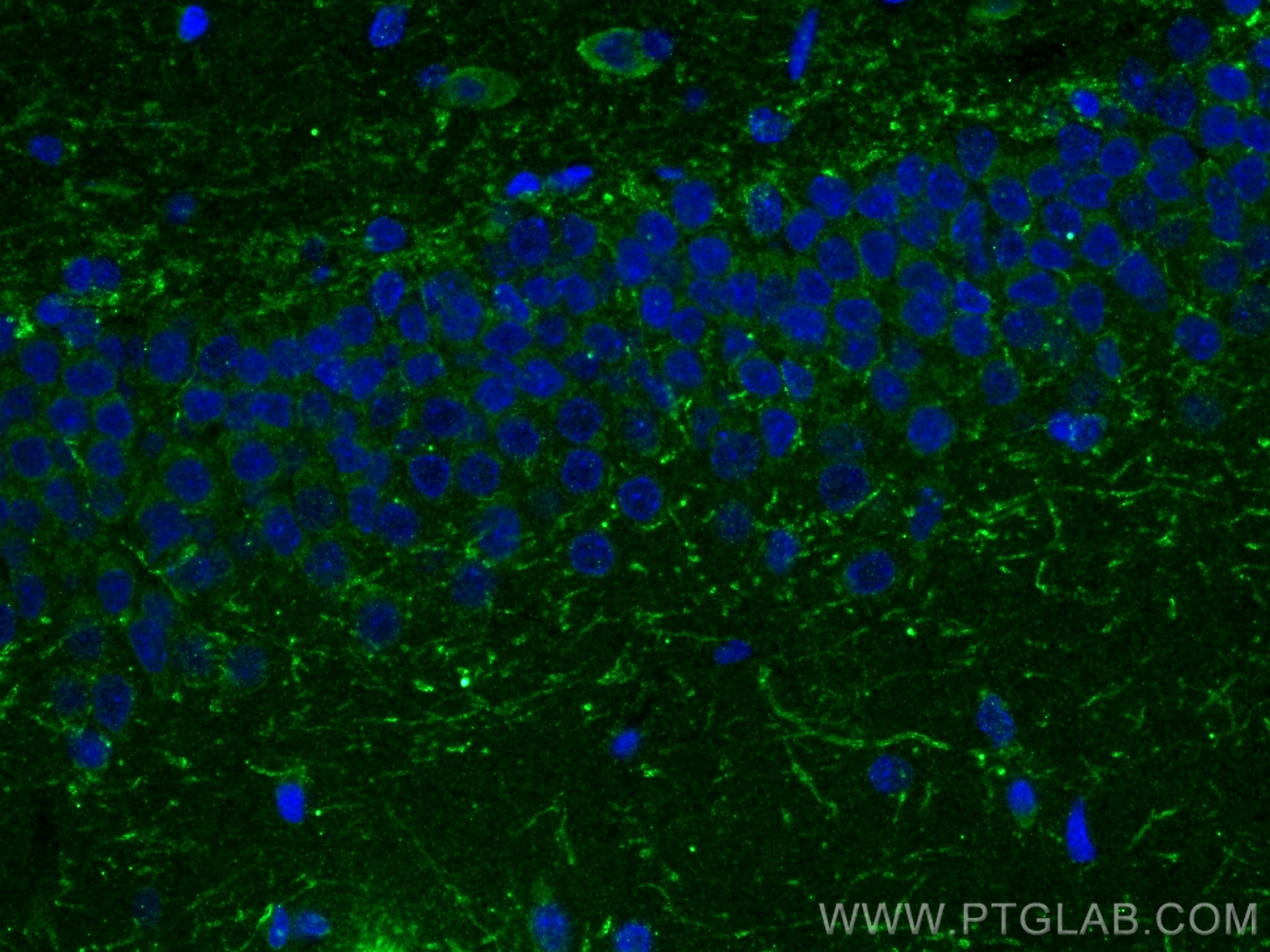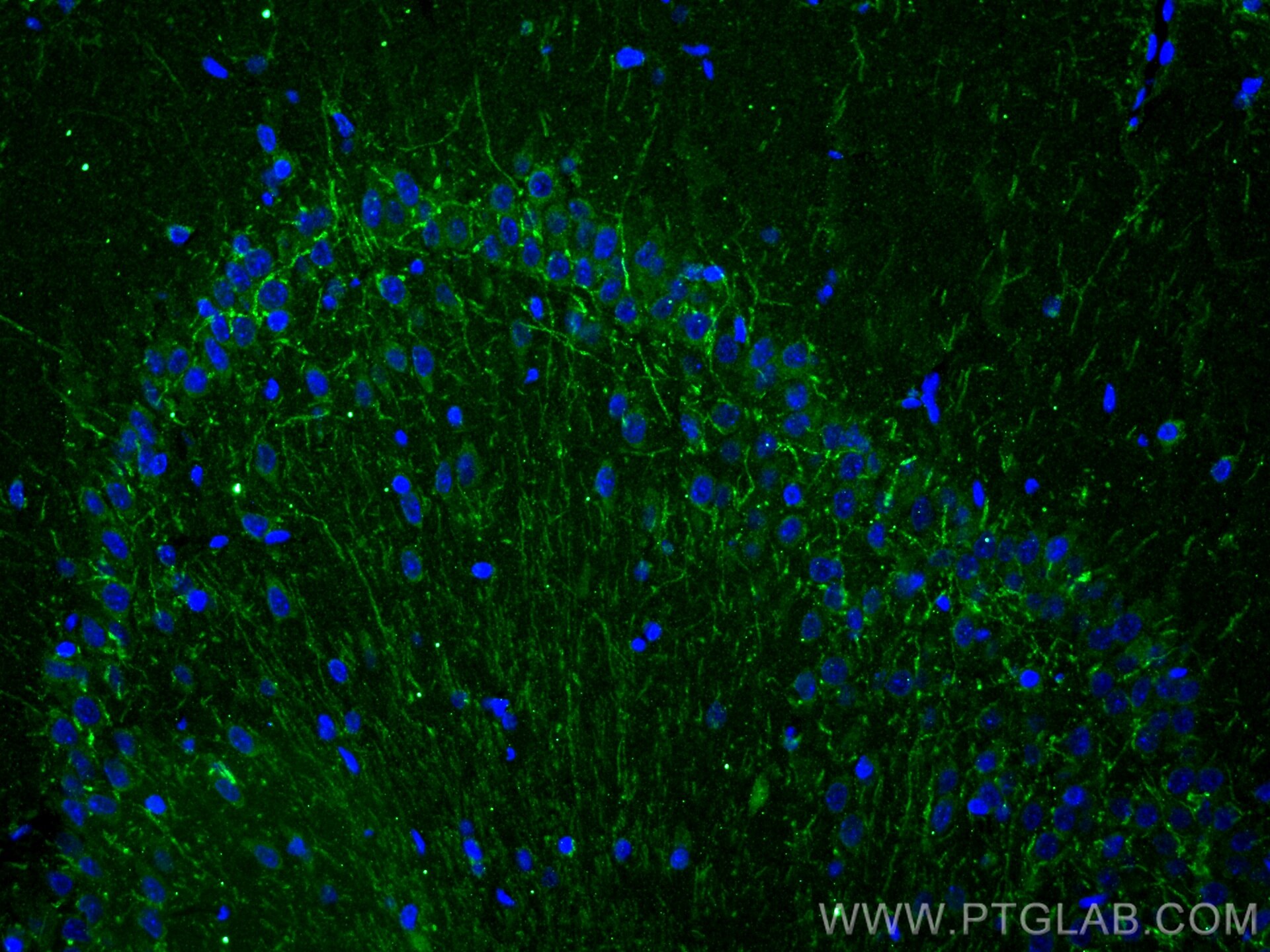Tested Applications
| Positive IHC detected in | human brain tissue Note: suggested antigen retrieval with TE buffer pH 9.0; (*) Alternatively, antigen retrieval may be performed with citrate buffer pH 6.0 |
| Positive IF-P detected in | mouse brain tissue, rat brain tissue |
Recommended dilution
| Application | Dilution |
|---|---|
| Immunohistochemistry (IHC) | IHC : 1:50-1:500 |
| Immunofluorescence (IF)-P | IF-P : 1:50-1:500 |
| It is recommended that this reagent should be titrated in each testing system to obtain optimal results. | |
| Sample-dependent, Check data in validation data gallery. | |
Published Applications
| IF | See 2 publications below |
Product Information
23561-1-AP targets HTR6 in IHC, IF-P, ELISA applications and shows reactivity with human, mouse, rat samples.
| Tested Reactivity | human, mouse, rat |
| Cited Reactivity | human, mouse |
| Host / Isotype | Rabbit / IgG |
| Class | Polyclonal |
| Type | Antibody |
| Immunogen |
CatNo: Ag15396 Product name: Recombinant human HTR6 protein Source: e coli.-derived, PET28a Tag: 6*His Domain: 311-440 aa of BC074996 Sequence: CNSTMNPIIYPLFMRDFKRALGRFLPCPRCPRERQASLASPSLRTSHSGPRPGLSLQQVLPLPLPPDSDSDSDAGSGGSSGLRLTAQLLLPGEATQDPPLPTRAAAAVNFFNIDPAEPELRPHPLGIPTN Predict reactive species |
| Full Name | 5-hydroxytryptamine (serotonin) receptor 6 |
| Calculated Molecular Weight | 440 aa, 47 kDa |
| GenBank Accession Number | BC074996 |
| Gene Symbol | HTR6 |
| Gene ID (NCBI) | 3362 |
| RRID | AB_2879296 |
| Conjugate | Unconjugated |
| Form | Liquid |
| Purification Method | Antigen Affinity purified |
| UNIPROT ID | P50406 |
| Storage Buffer | PBS with 0.02% sodium azide and 50% glycerol, pH 7.3. |
| Storage Conditions | Store at -20°C. Stable for one year after shipment. Aliquoting is unnecessary for -20oC storage. 20ul sizes contain 0.1% BSA. |
Protocols
| Product Specific Protocols | |
|---|---|
| IF protocol for HTR6 antibody 23561-1-AP | Download protocol |
| IHC protocol for HTR6 antibody 23561-1-AP | Download protocol |
| Standard Protocols | |
|---|---|
| Click here to view our Standard Protocols |
Publications
| Species | Application | Title |
|---|---|---|
Nat Neurosci Spinal cord Tau pathology induces tactile deficits and cognitive impairment in Alzheimer's disease via dysregulation of CCK neurons | ||
Cureus Possible Role of 5-Hydroxytryptamine (5-HT) Receptor on Human Sperm Motility Regulation |

